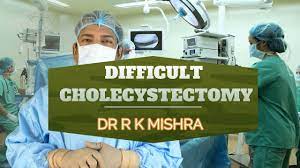Managing Bladder Injury During TAPP Hernia Repair: Step-by-Step
Add to
Share
14 views
Report
1 day ago
Description
Transabdominal Preperitoneal (TAPP) inguinal hernia repair is a widely practiced and highly effective laparoscopic technique for treating inguinal hernias. However, like all advanced minimally invasive procedures, it carries certain risks. Among these, bladder wall injury is a rare but serious intraoperative complication that requires prompt recognition and precise management to ensure patient safety and favorable outcomes. At World Laparoscopy Hospital (WLH), Gurgaon, surgeons are trained to identify, prevent, and manage such complications with exceptional skill and evidence-based techniques. Understanding the Risk The urinary bladder lies in close proximity to the lower part of the abdominal wall, especially near the pubic symphysis and Cooper’s ligament, areas frequently dissected during TAPP repair. Bladder injuries most commonly occur in cases of: Recurrent inguinal hernias Previous lower abdominal or pelvic surgery (e.g., prostatectomy, cesarean section) Extensive adhesiolysis during the dissection of the preperitoneal space Inadequate bladder decompression before port placement At WLH, surgeons emphasize preoperative bladder emptying and careful anatomic orientation to minimize this risk. Intraoperative Recognition Early recognition of bladder injury is crucial to avoid postoperative complications. During TAPP repair, certain findings can alert the surgeon: Clear fluid pooling in the operative field (suspicious for urine leakage) Visualization of bladder mucosa or wall defect Gas within the Foley catheter tubing (indicating CO₂ passage into the bladder) At World Laparoscopy Hospital, trainees are taught intraoperative diagnostic techniques such as: Instillation of methylene blue-dyed saline through the Foley catheter to confirm leakage. Continuous laparoscopic visualization of the dissection plane to identify early warning signs. Immediate Management Protocol Once identified, the management of bladder wall injury depends on its size and location. The protocol followed at WLH includes: Small Partial-Thickness Injuries (<1 cm) Managed conservatively with Foley catheter drainage for 7–10 days. No suturing required if mucosal continuity is intact. Full-Thickness or Large Injuries Two-layer intracorporeal repair using absorbable sutures (e.g., 3-0 polyglactin) is performed laparoscopically. The first layer closes the mucosa, while the second layer reinforces the muscularis and serosa. Leak test with methylene blue is done to confirm watertight closure. Postoperative Care Continuous Foley catheter drainage for 10–14 days. Ultrasound or cystogram before catheter removal to ensure complete healing. Antibiotic coverage and monitoring for signs of infection or hematuria. Preventive Strategies Emphasized at WLH World Laparoscopy Hospital’s teaching curriculum focuses on prevention through precision and anatomical mastery. Key preventive steps include: Mandatory bladder decompression with Foley catheter before surgery. Gentle dissection around the pubic bone and medial umbilical ligament. Avoiding deep inferior dissection below Cooper’s ligament in scarred fields. Using correct trocar placement and maintaining clear visualization of all landmarks. Through high-definition video demonstrations, simulation-based training, and real-case observations, WLH ensures every trainee gains confidence in recognizing and preventing such rare complications. Expert Insight from Dr. R. K. Mishra According to Dr. R. K. Mishra, Director of World Laparoscopy Hospital and a global authority in minimally invasive surgery: “Bladder injuries during TAPP repair are uncommon but entirely preventable with a sound understanding of pelvic anatomy and meticulous dissection technique. At WLH, we emphasize not only how to perform the surgery but how to anticipate and manage complications with laparoscopic precision.” Conclusion Bladder wall injury during TAPP inguinal hernia repair, though infrequent, demands a surgeon’s keen observation, rapid response, and refined laparoscopic suturing skills. The comprehensive hands-on training at World Laparoscopy Hospital empowers surgeons worldwide to handle such challenges confidently. Through structured education, simulation, and mentorship, WLH continues to uphold its reputation as the world’s leading center for excellence in laparoscopic surgery and complication management.
Similar Videos






